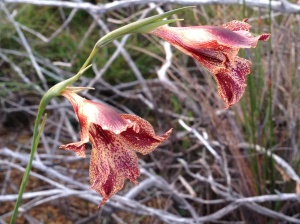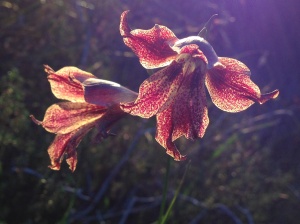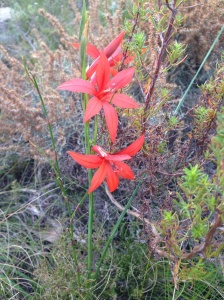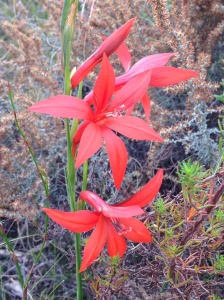It’s been a while since I’ve posted a blog and I think I may be struggling with a little writer’s block. There has been so much travel, work, report writing, negotiating still more work, over the last few weeks, to say nothing of trying to keep a semblance of normal life, that the runs and the flowers have faded to the background. Back on a plane now, headed to Nairobi, not a destination that’s particularly attractive at the moment, Time to write a blog. The lovely thing about this time of year is that every day is so different.
Unlike most of the continent we do have four proper seasons and now we are headed from autumn to winter. I’ve talked before about how our autumn is more like spring in the Irish world I come from. Here it is the relentless heat that stifles growth and shrivels the landscape. So once the rains fall and the temperature is mild, the landscape becomes green, birds start courting and building nests and though winter is cold and damp, it is also fecund and bears the promise of life to come.
One silly Cape Francolin (a partridge-like bird) decided to build her nest on the shores of the dam, where the undergrowth is thick and a willow tree grows overhead. Jemima Chew found her, of course, and she flew into the willow tree and refused to budge; presumably reluctant to leave her eggs (it is a little too early for chicks). Jemima spent the entire day barking at her, running around the willow tree, ferreting in the damp waters and generally causing havoc. The bird still didn’t budge. At one point, when Peter and I went to inspect the cause of all this commotion, Jemima Chew had actually managed to climb onto the lower branches of this willow tree, defying both gravity and the limitations of her portly figure. I had left my iphone in the house so we have no evidence of this unlikely event. Luckily night brought the irresistible temptations of a warm fire and a good dinner and the by next morning the francolin had learned some sense and was gone. Birds are not stupid.
While we were there we saw the first arum lilies of the season. These lovely lilies are indigenous here and will grow all winter long anywhere damp, the wetter the better. Roadside verges are covered in them, a joy to behold. The gleaming whiteness is quite hard to photograph, but these are the first.

The first Aurm Lily of the year
Another fynbos bulb that likes damp places is Chasmanthe floribunda. I grew up knowing this as Montbrecia – it grows wild in the hedgerows of Ireland (a damp, mild climate if ever there was one). Oddly in Ireland it also flowers in May and June, justifying my claim that the Cape autumn is a kind of spring. Botannical names get changed to bring more global consistency and perhaps this is one that has been changed. When I look up Montbrecia it shows up as Crocosmia and looks exactly the same, so I’m a bit confused. Not an uncommon feeling when it comes to naming fynbos with pinpoint accuracy.
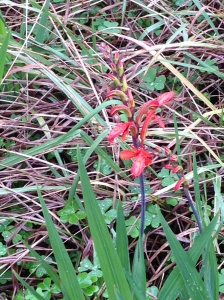
Chasmanthe floribunda, or Montbrecia or Crocosmia
There is a particular light we see here in winter that charms me most of all. It happens when the sun is setting in the West/North West and a mist comes off the river down in the Paarl valley on a perfectly still evening. At a certain moment the setting sunlight catches the mist and turns the whole valley into gold. I only ever see it once or twice a year and it is enthralling. Last week we had such an evening and this photo is taken from the balcony. Hard to catch the magical glimmering golden light in a photograph, yet there is something of it captured here.

A golden evening
The next morning greeted us with cool cloudy weather pierced by the odd shaft of sunlight and a double rainbow.
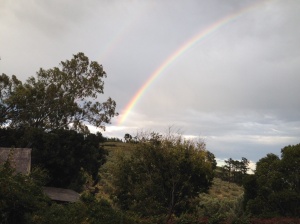
As we ran up the mountain we saw the first wild rosemary – Eriocephalus africanus. This stunning herb grows commonly all over the farm and soon the air will be scented with its flowering. The tiny while flowers are a delight to behold and we’ll see many more of them in the months to come.

Eriocephalus africanus, wild african rosemary
The Phylica is now in full flower everywhere and I noticed that the tiny flower heads have opened, each one a little flower in its own right. So pretty.

Phylica eriocoides


